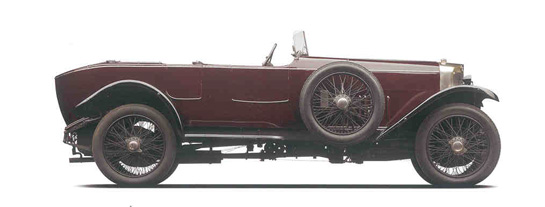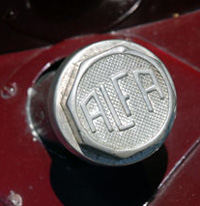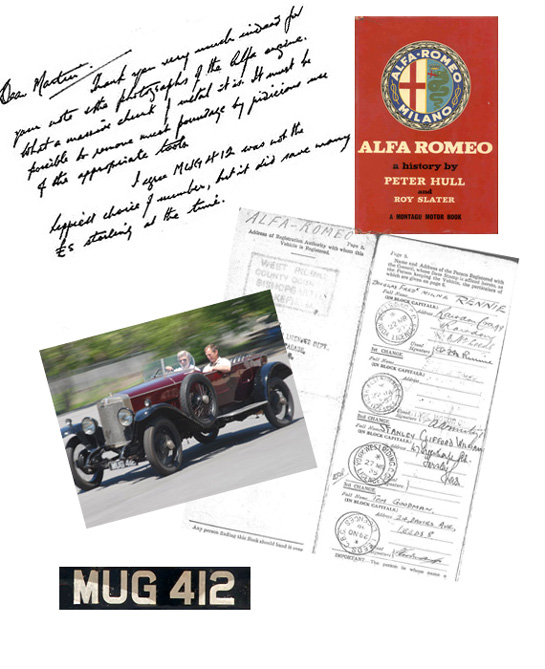
The fascinating history of the Alfa Romeo RLSS MUG 412. Upper left, letter from Tom Goodman; upper right, the Hull and Slater book; original registration from 1927; MUG 412 plate and the RLSS at the Simeone.
By Pete Vack
Fred Simeone became the owner of this rare Alfa Romeo RLSS, chassis number 69013, because he rarely forgets a mug. “I was at Goodwood in 2002 and noticed the Bonhams’ catalog had an RLSS for sale with a British license plate which read ‘MUG 412‘. It struck me as being very familiar, and I then remembered I had read about this car in the Alfa history by Peter Hull and Roy Slater some forty years earlier.” And sure enough on page 63 of the first edition, was a description of this particular Alfa and how it was built for a relative of actor Michael Rennie. Simeone didn’t need to know too much more to bid successfully on the RLSS. (Read Driving the RLSS) It wasn’t the first time the unusual tag was the object of attention.
“I agree that MUG 412 was not the happiest choice of number, but it did save many pounds sterling at the time”, Tom Goodman wrote in a letter to Martin Shaw. Goodman bought the RLSS in 1949, re-registered it from WW626 to MUG 412 to save money. In his letter, Goodman was obviously trying explain the strange license tags to Shaw, who purchased the car from Goodman around 1960. But why should merely changing the registration save Goodman “many pound sterling“? We all were struggling with that one until Nicholas Lancaster sent a query to British plate specialist Michael Worthington Williams. “The MUG number was a 1949 issue and this gives the clue,” emailed Worthington Williams. “In the early days of vehicle registration the tax a vehicle paid each year for its road license was based on one pound per horsepower. [the Alfa would have at least 22 hp for the purposes] After WWII, however, a flat rate of I think ten pounds was introduced for all new registrations. Many older large cars were then “rebuilt” and re-registered under the current system. Many vintage cars lost their original registration numbers at that time and for that reason. I’ve spent a good deal of time since then recovering original numbers for people.”
Although the tag may not have been the happiest choice, it enabled people to easily keep track of the car despite a body change, race equipment and other modifications over the years, and of course being the key to the sale to Simeone.
Please take the time to contribute and keep VeloceToday coming to your inbox every week. It’s easy and safe. Simply click here for details. 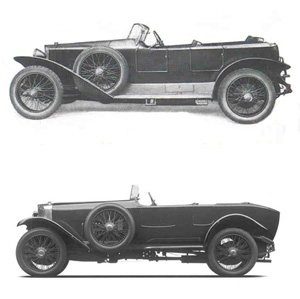 [/caption]
[/caption]
Also in that sturdy RLSS box were the original registration papers, issued on March 22, 1927, to Douglas Fred Milne Rennie, of Rawdon, Yorkshire. Rennie had actually bought the chassis, built in 1925, at least a year before and later brought the RLSS to an engineering and coachbuilder in nearby Bradford. Presumably taking with him a photo of a saucy Zagato bodied RLSS, Rennie had Thornton Engineering make a copy. Certainly a Zagato catalog would have been available to Rennie; Zagato’s first pamphlet, printed in 1925, clearly shows a torpedo style four-seater almost identical to the Thornton body. There was a difference, however—the craftsman at Thornton created a hideaway space for the huge top. Two panels behind the rear seat opened up to each side for access. It may have been one of the first completely hidden convertible tops.
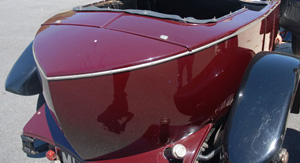
Thornton crafted the top so that it could be stowed away, hidden under the two panels which lifted outwards to reveal the folded hood. The craftsmanship is superb.
When Tom Goodman acquired the car, he was eager to participate in the events put on the by the growing Vintage Sports Car Club, but he found the Thornton body both too heavy and very easy to remove. “I saved 5cwt (500 lbs) by substituting a very simple and crude aluminum affair,” he wrote to Shaw. Fortunately for Shaw, Goodman had the good sense to hang on to the Thornton bodywork.
The body is almost flawless, the handwork is superb. Goodman had removed the body but as we have seen, keeping it intact and out of the weather for years. Therefore it is well preserved, including much of its original upholstery. Except for the repaint it is unaltered. It’s a boattail design, the main body in burgundy and the fenders in dark blue rather than the two shades of green noted by the Autocar. Another nice feature was the removable windscreen, which comes off and folds in the middle, easily stored, for high speed driving.
The RLSS was the last Alfa to bear traces of its A.L.F.A. ancestry, with Alfa and Romeo separately on the brake and clutch, and just “Alfa” on the gas cap, which according to Hull, was a very fine threaded affair capable of causing pain to “any unwary petrol pump attendant who let it slip through his fingers and onto his foot.”The size and the vertical attributes of the RL are outside our normal frame of reference. A few hours before, we had been admiring the lines of the 1932 8C2300 Castagna, as agreeable in 2010 as they were in 1932. The Castagna is low; the smaller engine sits within the frame rails, the body swoopy, racy and minimal against the tall wire wheels. The RL, even when bodied by a master such as Thornton Engineering, is an upright, tall, square rigged, and a four passenger to boot. Nothing leans from the wind, aside from the V shaped windscreen. It fails to look like it’s going 90 standing still and it’s difficult for most to imagine a car like this could travel that fast and corner like a train. The grandfatherly RLSS imposes its size and height on the onlooker. Like its counterpart the Bentley 3 liter, it is an acquired taste. But after driving it, the lines seem not to matter so much. It is fetching and the feeling about being upright fades fast. Highboy though it is, the RLSS was and remains a significant and magnificent automobile.
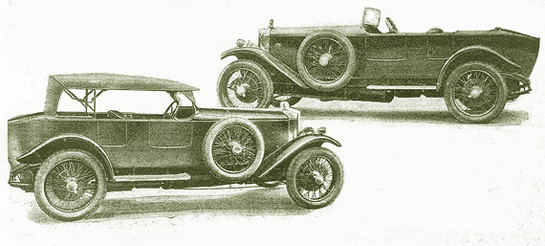
The Simeone RLSS was featured in AUTOCAR, April 29th, 1927. This smart sports four seater body on a 22-90 hp Alfa Romeo chassis has recently been built for Mr. D.M. Rennie of Rawdon by the Thornton Engineering Co. A disappearing hood, folding rear screen and tapered tail are features of a body finished in two shades of olive green, said the caption.
Our thanks to:
Fred Simeone
Nicholas Lancaster
Michael Worthington Williams
